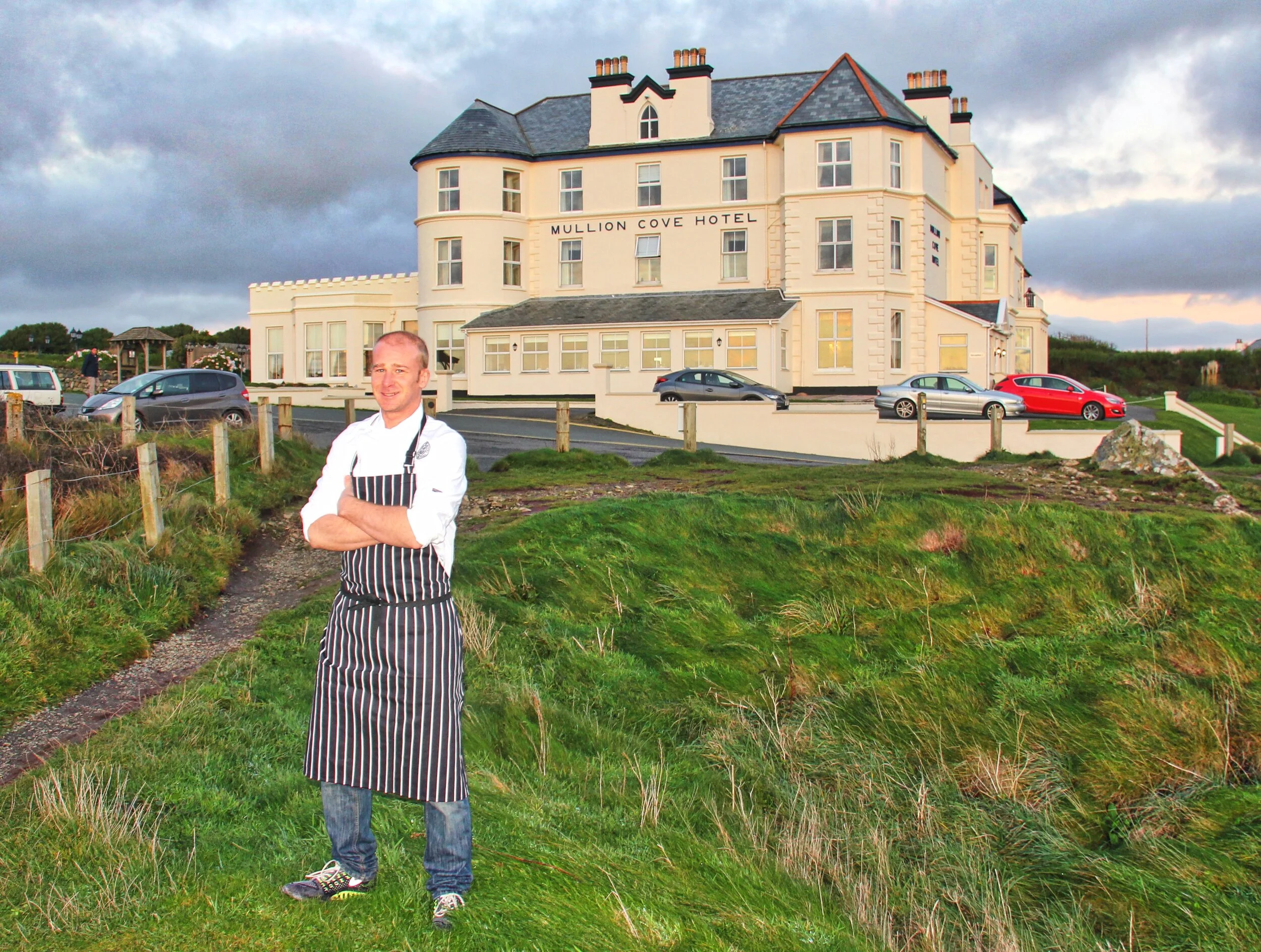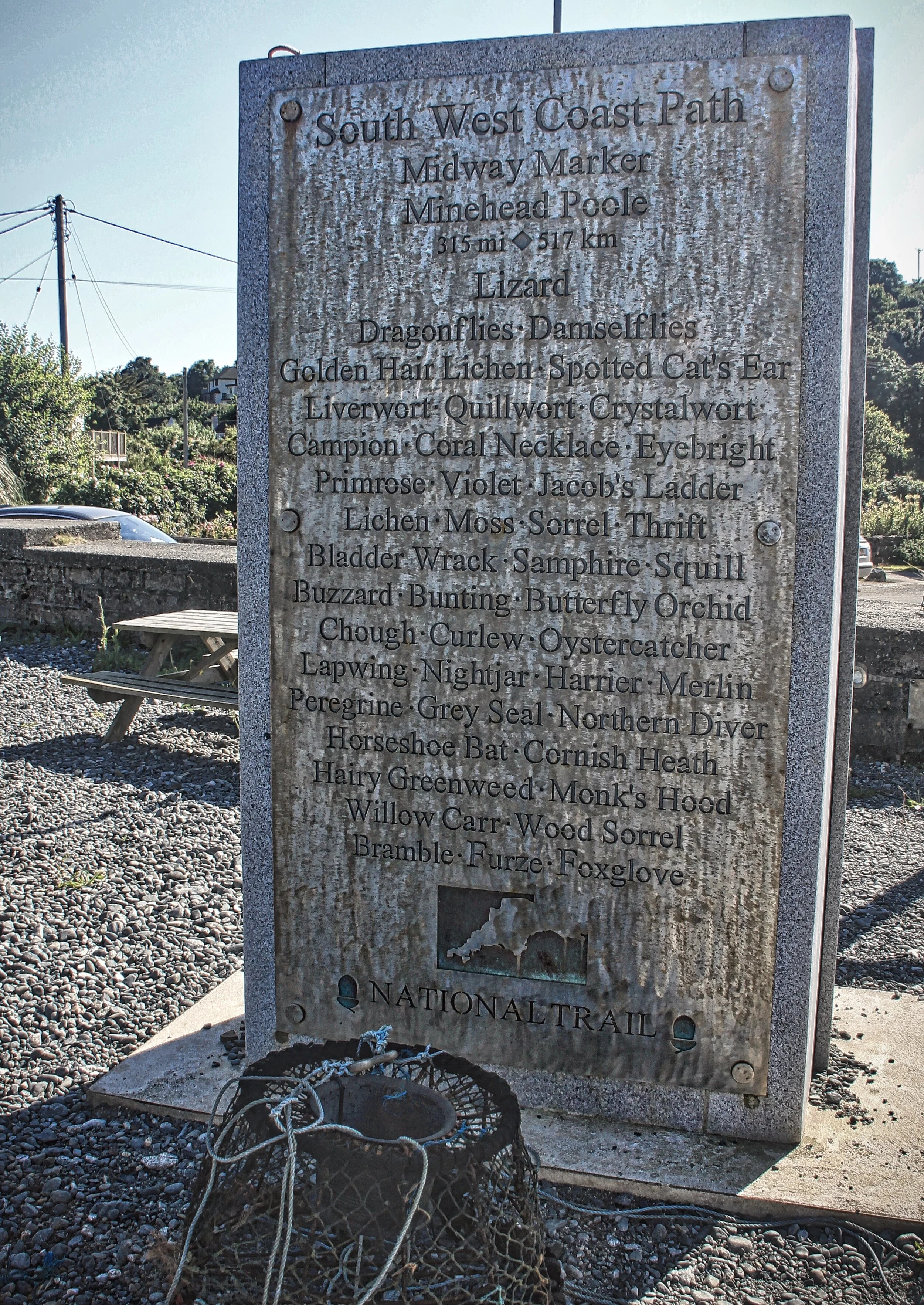Secret Cornwall - Church Cove
I was going to start by saying that here’s a walk for Poldark fans. But that is ridiculous - anyone can enjoy this lovely seaside hike in Cornwall whether they’ve seen the TV show or not. But Poldark fans will probably recognise the church because as far as I can recall the little stone-built beach-side temple on the west coast of The Lizard appeared in several episodes.
What television viewers will not know is that the church at Church Cove is said to be made of wine.
There are such things dotted around the world on coasts where sailors have survived a drowning. The shipwrecked mariners build a shrine in thanks to their Lord, and if the ship in which they were travelling happens to have been carrying wine – they ritualistically pour some into the mortar mix.
No one knows off this really was the case at St Winwaloe’s near Gunwalloe - but it is probably closer to the sea than any other church in the West Country. When the tide is up and there’s a blow from the west, spray must beat against its ancient door.
In this walk we explore the region south of Halzephron Cliff along the littoral to the south of Mullion Cove, taking in Church Cove and its temple and neighbouring Poldhu Cove.
To find the area, travel south from Helston alongside the giant Culdrose airbase and turn right, taking signs for Gunwalloe. This is a cul-de-sac of a lane that takes you down to the coast. At the end of this road you’ll come to Church Cove. Once there, you’ll see a large car park behind the farm at Winnianton - and one walking option is to do the short but highly enjoyable figure-of-8 hike that took me an hour-and-a-half.
And what a walk it was – one of those bright-light-treatment jobs that make you feel exhilarated to be alive. First though, the boring bit. I walked back up the hill I’d just driven down so that I could reach the top of Halzephron Cliff and turn south once again. This is not so bad as you may think because, after a narrow bit, the roadside sward widens into a pleasant path.
Eventually the road reaches the cliff-side and this is where you turn left along the coast path. It’s called Halzephron by the way, because the prefix comes from the Cornish “als” – or Hell (“ephron” comes from the Cornish “yfarn” for cliff). And hell it is – or would be if you happened to be afloat here in a storm. Many ships have come to grizzly ends below these crags.
The coast path takes you out along this small headland and around the point at Pedngwinian. Now the path turns south east to descend slowly around the ramparts of a rocky beach called Jangye-ryn.
You are now back to more-or-less where you parked, but do not think of going home yet because next comes one of the strangest and most unexpected bits of the Cornish coast. Jangye-ryn is separated from Church Cove by the small but noble headland which protects St Winwaloe from the waves.
This promontory raises its grassy head on a 60 foot shoulder of rock that ascends abruptly from the salty lowlands that lurk behind both beaches and play host to the church. There was a settlement here in Domesday times and there was a church of sorts – but the present building dates back to around the 14th or 15th centuries.
I walked around the mini-headland to enjoy views of both bays and the church and its graveyard. One of the oddest things about St Winwaloe is that its small tower is completely separate from the main building, being set snug against the steep inner bank of the headland. It is a romantic place. No wonder the BBC Poldark crew used it as a location.
Noticing a public right of way ascending inland from the church up over the golf course, I climbed the National Trust owned Towans (as the course is known) and then joined the lane south down to Poldhu Cove. The trust owns much of the land around here, and a good thing too. I read somewhere that Church Cove used to become one giant car park in summer when vehicles were allowed on the beach and this was having a ruinous effect on the fragile environment.
Much the same applied to Poldhu Cove, but now cars have been prevented from parking there too, and marram grass has been planted to stabilise the dunes.
Having reached Poldhu it’s a matter of joining the coast path and heading back north to Church Cove. As you go, you may ponder over which sailor built the sea-borne church in gratitude to his Maker. No one knows if the legend is true, but it’s a fact that the King of Portugal’s treasure ship – the St Anthony – went down near here in 1527 and that an unidentified Spanish ship was wrecked just north of the church in the 1780’s.
Legends of gold, silver and grateful sailors have been associated with the location ever since, but then, it’s that sort of place.
Fact File:
Basic hike: Park at Winnianton, walk back up road to Halzephron Cliff, join coast path back to Church Cove – then take right of way across golf course inland and join road down to Poldhu Cove before taking the coast path back to start.
Recommended map: OS Explorer 103 The Lizard.
Distance and going: three and a half miles, easy going.
LOCAL KNOWLEDGE
A must at Mullion
The Lizard is a long way for most people to reach so staying a night or two there is recommended. And I’d certainly recommend the dog-friendly Mullion Cove Hotel just two miles from today’s walk. Good food, brilliant views. www.mullion-cove.co.uk
Five Pilchards at Porthallow
If the prevailing wind and weather is proving too much on Lizard’s west coast, pop across to the eastern shore and take refreshment at the cosy 300-year-old Five Pilchards at Porthallow. The name comes from the traditional way of counting pilchards in groups of five. ww.thefivepilchards.co.uk
Midway Marker
If you do find yourself in Porthallow, doff your cap to the Midway Marker. It is the splendid plaque which tells long distance hikers they are halfway around the South West Coast Path. Whichever way you’re headed, there’s only 315 miles to go.














